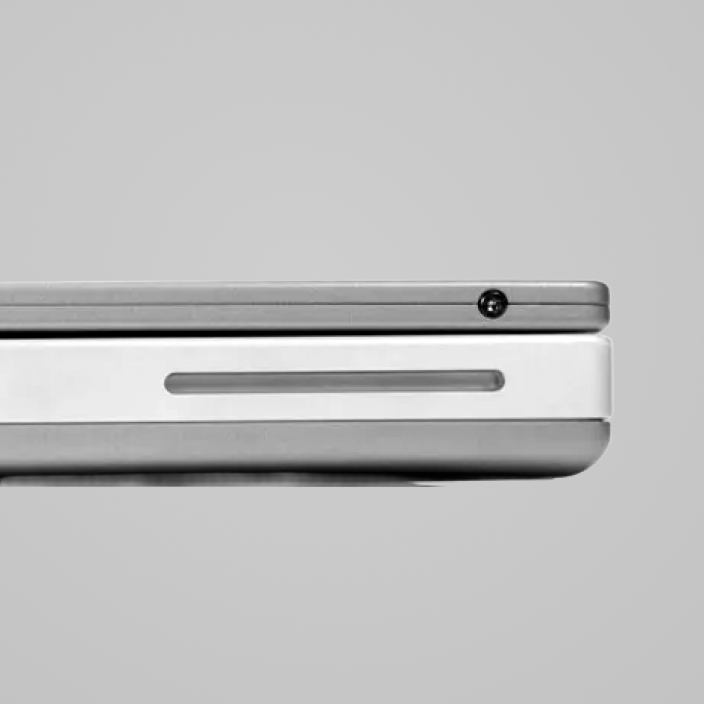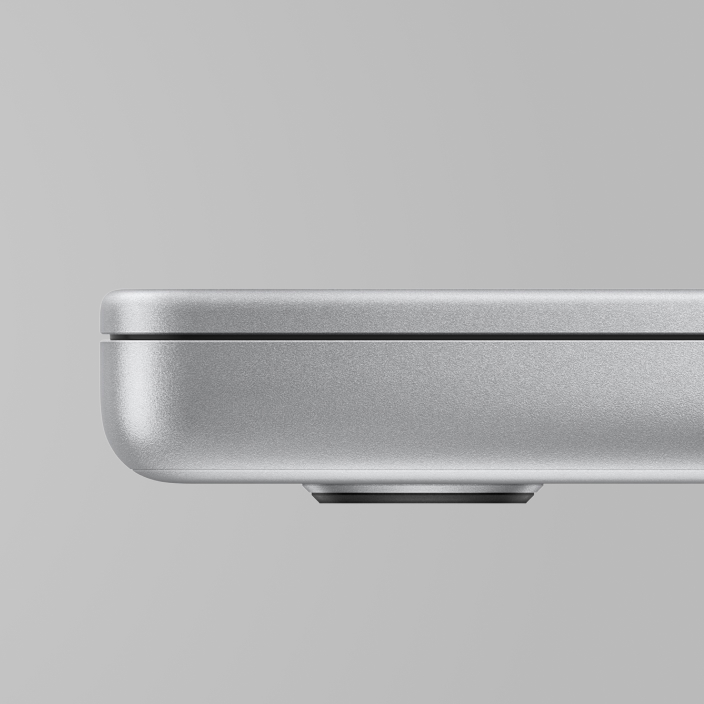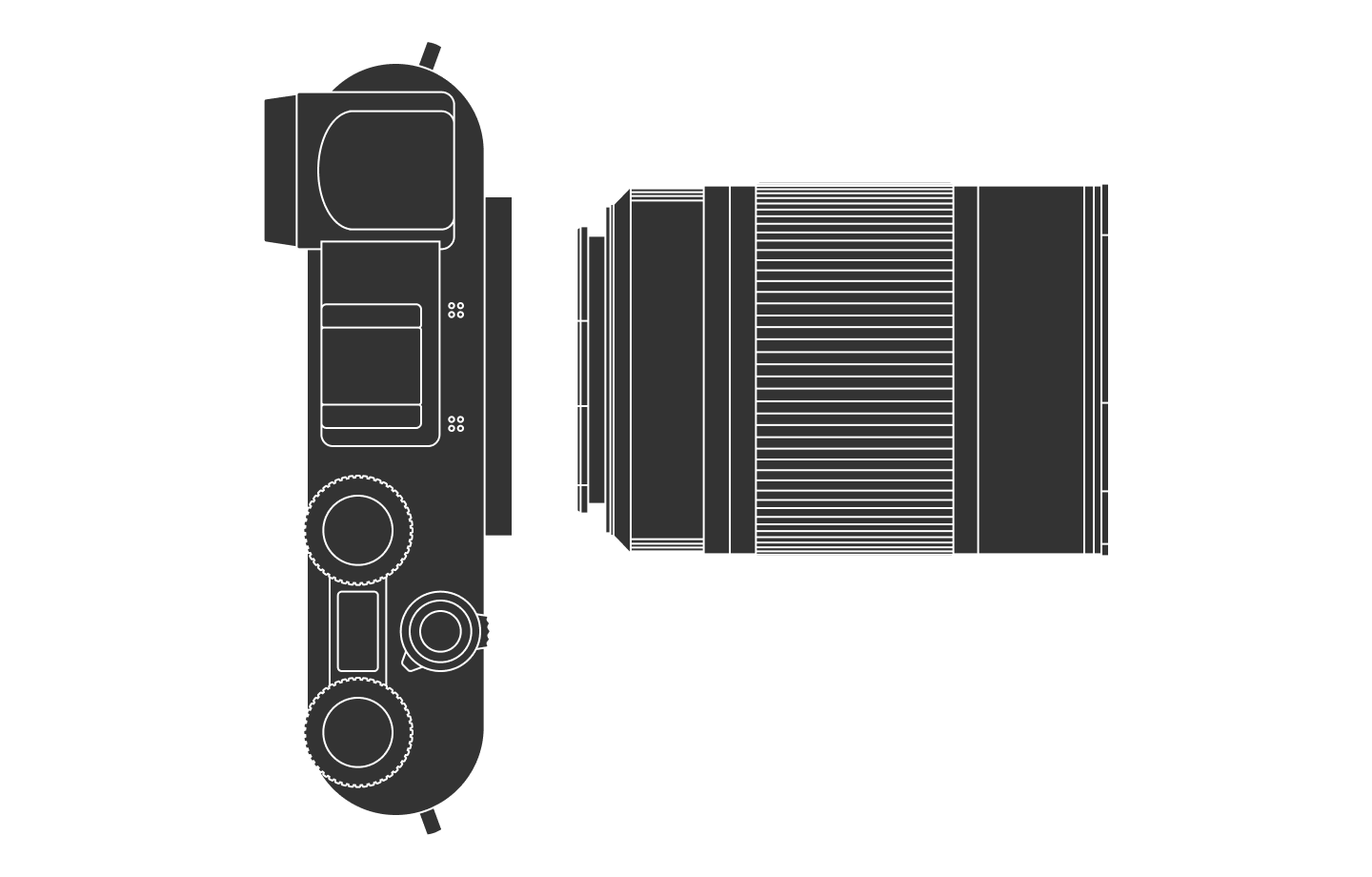
Aesthetics over upgrades
9 min read Jun 27, 2025
I often nostalgically look back at products of the past — the colorful original iMac or the Palm Pilot — and wonder what it would be like if I could use them today. Of course, I can’t. They lack the connectivity, the power, and the software needed.
For a long-running product line like the iMac, each iteration was certainly better in most ways — power, size, quality. Yet, something is lost at each iteration. The colorful plastic enclosure of the G3 iMac, the articulating arm of the G4 and the translucent shell of the G5 each offered a unique intrinsic beauty that was lost when a new design was introduced.
 First four iterations of the
iMac
First four iterations of the
iMac
I used to follow each new product introduction, seeing the real value that hardware and software improvements brought. Moore’s Law meant that CPUs improved year over year. Each new generation also brought better battery life, more convenient ports, faster charging, built-in webcams, and more.
Though, a few years after release, operating system updates ceased and the hardware was too slow for new software. Or at least that’s how things were.
Recently, electronics like the smartphone and personal computer have matured. Each device is so powerful and feature-laden that new generations only offer the minutest improvement.
The earliest models of the iPhone brought big new features like GPS in the iPhone 3G or high-resolution display in the iPhone 4. These days, new features are incremental, like the switch to USB-C in the iPhone 15.
For the first time, I don’t have to give up the beauty of older models. When devices from multiple generations remain functionally viable, I can choose designs that would otherwise be lost to progress.
iPhone 14 Pro (2022)
The iPhone 14 Pro exemplifies my new freedom to choose design over recency. It feels like the ultimate incarnation of the iPhone 4 from a decade earlier — my favorite phone.
The formula is elegant — a stainless steel rail doubles as both the main structure and the antennas. On either side are glass panels that protect the electronic components suspended within.
 Leica CL · 60mm · f/2.8 · 1/160 ·
ISO 200
Leica CL · 60mm · f/2.8 · 1/160 ·
ISO 200
This silver iPhone 14 Pro is all about material honesty. The stainless steel is polished with no coating altering the color. Rings around the rear cameras match. In hand, stainless steel is cool while the glass slightly warmer. The back glass features a soft frosted finish, interrupted only by the central Apple logo and the camera bump.
 Leica CL · 60mm · f/2.8 · 1/400 ·
ISO 100
Leica CL · 60mm · f/2.8 · 1/400 ·
ISO 100
Those two materials harken back to the iMac G4, whose stainless steel arm held up a glass display. The steel and glass combination made the iMac G4 beautiful two decades ago just as it makes the iPhone 14 Pro beautiful today. When designs achieve this timeless quality, they’re worth preserving.

The stainless steel does make for a slippery and heavy device. Newer models improve both with a textured titanium frame. But the jewelry-like quality imparted by the stainless steel was lost.
 Leica CL · 60mm · f/2.8 · 1/160 ·
ISO 125
Leica CL · 60mm · f/2.8 · 1/160 ·
ISO 125
Because of how mature my iPhone already is, I can choose to curate based on aesthetic preference instead of accepting the compromises of newer models.
M2 MacBook Air (2022)
Where the iPhone represents choose material excellence, the MacBook Air represents refinement of form.
The first MacBook Air — underpowered and expensive — hinted at what was possible. Today’s models deliver on that vision. The MacBook Air is as powerful as an expensive desktop for everyday tasks, while the unibody construction of the original, makes it both strong and lightweight.
For over a decade — from the first-generation MacBook Air to the one before this redesign — it had a signature wedge shape, tapering near the palm rest. While I appreciated the lightness, I’ve always preferred simpler, rectilinear shapes over the organic taper.
 Leica CL · 60mm · f/2.8 · 1/500 ·
ISO 100
Leica CL · 60mm · f/2.8 · 1/500 ·
ISO 100
When the M2 MacBook Air was unveiled, I knew it might be the only computer I’d ever need. In form, it’s like a flattened version of the MacBook Pro, which itself takes inspiration from an older ancestor — the Titanium PowerBook from two decades ago. The shape’s signature is its asymmetry — tighter curves at the top, wider at the bottom.


 Leica CL · 60mm · f/2.8 · 1/320 ·
ISO 100
Leica CL · 60mm · f/2.8 · 1/320 ·
ISO 100
The chassis strikes a perfect balance between rigidity and flexibility. When dropped, it dents rather than cracks.
The soft, bead-blasted anodized finish is Apple at its best. Over the years, the consistency of this texture has improved dramatically. Put a 20-year-old PowerBook next to this MacBook Air and you’ll see the difference.
 Leica CL · 60mm · f/2.8 · 1/800 ·
ISO 100
Leica CL · 60mm · f/2.8 · 1/800 ·
ISO 100
When I dock this machine at home, it feels indistinguishable from a desktop. On the go, it’s the smallest and lightest Apple laptop available. With so much unused power, I don’t know when I’ll ever consider an upgrade.
Apple Watch Series 9 Space Black (2023)
The pattern continues with my Apple Watch, where I’ve chosen a finish that Apple discontinued.
I’ve written at length about the Apple Watch. It follows me everywhere, tracking my workouts and sleep, offering timers and other utilities. Importantly, it’s never distracting.
Ever since my wife gave me an aluminum Series 6, I’ve had my eye on the Space Black stainless steel models.
 Leica CL · 60mm · f/2.8 · 1/200 ·
ISO 100
Leica CL · 60mm · f/2.8 · 1/200 ·
ISO 100
This model features a finish found nowhere else in the lineup: a black diamond-like carbon (DLC) coating. A thin layer of carbon is deposited on the steel chassis. Its hardness is second only to diamond, making it nearly impossible to scratch.
This is one of many techniques used on expensive wristwatches that Apple applies at scale. The result is a minimal black pebble-like form. The pitch-black sapphire glass-topped OLED blends into the chassis.
 Leica CL · 60mm · f/2.8 · 1/160 ·
ISO 200
Leica CL · 60mm · f/2.8 · 1/160 ·
ISO 200
It’s no secret Apple Watch upgrade cycles are getting longer with marginal improvements year over year. In fact, my watch — with the now-restricted blood oxygen sensing — is arguably better than what came after.
And just as Apple quietly moved the Space Black finish to the Hermès line in 2020, it has now quietly removed it entirely. Apple never comments on these types of decisions, but I’d guess it’s due to the cost of production combined with low demand.
There’s a cheaper jet-black anodized option now that matches the aesthetics, but doesn’t come close in durability. So in this case, like many others, the newest isn’t always the best.
 Leica CL · 60mm · f/3.4 · 1/160 ·
ISO 1600
Leica CL · 60mm · f/3.4 · 1/160 ·
ISO 1600
I love how well this model dresses up or down. On runs, I wear a black elastomer sport band and leave my phone behind. For formal events, I attach a Hermès strap.
AirPods Pro 2 (2022)
The AirPods Pro complete this pattern by showing a product category where incremental improvements seem almost impossible.
When the original AirPods Pro came out, they were a big leap over the regular version. The stems were shorter, and they introduced active noise cancellation that rivaled over-ear headphones. I used them for years until they broke beyond repair. So, I upgraded to the second generation.
 Leica CL · 60mm · f/2.8 · 1/160 ·
ISO 100
Leica CL · 60mm · f/2.8 · 1/160 ·
ISO 100
The glossy white plastic reminds me of mid 2000s Apple products, especially early iPods.
 My favorite, the 4th generation
iPod
My favorite, the 4th generation
iPod
Even the hinge, which appears to be aluminum, is plastic. The case is incredibly durable, bouncing and scratching instead of denting or cracking. Some criticize the AirPods for flying out of the case when dropped, but I see that as a feature. The movement diverts energy that might otherwise damage the parts.
 Leica CL · 60mm · f/2.8 · 1/250 ·
ISO 100
Leica CL · 60mm · f/2.8 · 1/250 ·
ISO 100
A small detail I love is flexibility in how they charge — via Lightning cable, MagSafe, or even the Apple Watch charger.
It’s hard to imagine how AirPods can get much better. They are already incredibly light. The sound isolation is fantastic. In fact, it improved years after I purchased them with the Adaptive Audio update. The sound quality nears its audiophile competitors, all while packing the integration with the Apple ecosystem and ease of repair that we’ve come to expect.
 Leica CL · 60mm · f/2.8 · 1/160 ·
ISO 125
Leica CL · 60mm · f/2.8 · 1/160 ·
ISO 125
Durability and relative affordability make the AirPods Pro trouble-free. They remind me of the iPod Shuffle, a device I could toss in my bag, not concerned of breaking.
Sustainability through Longevity
I have realized that I am no longer the early adopter that prefers the latest and greatest product. I no longer livestream the latest Apple keynote, ready to trade in my current device for a newer one.
This isn’t just about Apple prioritized the longevity of their products. Yes, they do support phones for six years at least. iPadOS 26, releasing later this year, will support the seven-year-old 2018 iPad Pro.
This is about having real options across multiple product generations with little if no noticeable downside. For me, this offers the chance to pick devices for their design, specifically their use of materials and physical form. I won’t have to feel nostalgic about old devices that are no longer practical, because the “old” devices that I love the most are still viable today.
The shift away from constant upgrades means that my relationship with these devices is changing. Holding on to them longer is making them feel much more like the lamp on my desk or the chair I’m sitting in. They aren’t merely appliances or commodities chosen only for utility.
Each device I’ve chosen represents a different pinnacle in design. The iPhone 14 Pro is the greatest combination of stainless steel and glass. The M2 MacBook Air is the most refined iteration of the die cast by the Titanium PowerBook. The Space Black Apple Watch is the most minimal. The AirPods Pro are the ultimate in versatile audio.
Together, these devices demonstrate that even though aesthetic evolution isn’t linear — with my favorite design choices left behind — I can hold on to those favorites and use them every day.
Thanks to Q for reading drafts of this.
